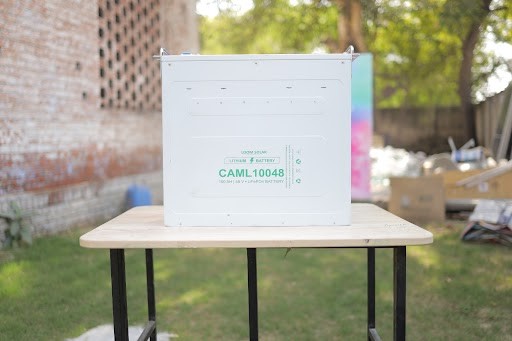Photovoltaic batteries with storage: technology and useful information
We take care of one of the more important elements than a storage system of a photovoltaic system or photovoltaic batteries. We go into more detail about the cost of photovoltaic storage batteries, their operation and the different types that determine the differences not only in the final price but also and above all on the ’efficiency of the system itself. One aspect, that of photovoltaic storage batteries is extremely delicate and important to analyze with extreme attention.
Photovoltaic systems and electric storage batteries, together, can guarantee savings on bills which, in some periods of the year, can reach 100%. How to choose the most suitable batteries?
Photovoltaic inverter battery storage devices represent a “new era” in the history of the technology. An accumulation system is a system which, by means of electric accumulators, collects the electricity produced during the day by photovoltaic (or wind or other sources) to make it available in the evening and at night when the photovoltaic is not producing.
Installing photovoltaic panels and storing part of the energy produced during the day in the batteries allows you to have your “own” clean energy available even in the evening when the system is not producing. This is the best way to make the most of your system and maximize autonomy from the electricity grid.
What are the types of batteries for photovoltaic with storage on the market?
On the market, there are different types of batteries for photovoltaic systems, which differ primarily in the type of material with which they are made and, in parallel, in other characteristics such as their size, power, duration, yield and efficiency. The most common batteries are:
- Lead-acid batteries: These are the cheapest and most common, but have a relatively short life and require periodic maintenance.
- Lithium batteries: These are more expensive but offer longer life, reduced weight and volume, and require no maintenance.
- Flow batteries: Use liquid electrolytes to store energy, offer greater scalability than other technologies and have a long life, but are still under development and are more expensive.
- Nickel-cadmium batteries: They have been used in the past but are gradually going out of the market due to their negative environmental impact.
- Nickel-metal hydride batteries: they have been used above all in electric vehicles, but they are also becoming increasingly popular in the photovoltaic sector thanks to their high efficiency and high performance.
- Molten salt bacteria: they are an emerging technology that uses molten salt as an electrolyte and are especially suitable for large applications.
The choice of battery depends on the specific needs of the user, such as storage capacity, duration, cost and efficiency, but also on the environmental impact of the latter.
Off-Grid Power Systems:
Off-grid power solutions such as solar systems are employed in locations with little or no connection to the electrical grid. Remote residences, cabins, telecommunications equipment, and other infrastructure may be powered by these systems in conjunction with energy storage technology like batteries.
Solar Farms and Power Plants:
Solar farms and power plants use massive photovoltaic systems to produce vast quantities of clean electricity. Solar panel arrays spanning enormous swaths of land are used in these projects to generate power at a utility-scale from the sun.
Residential Solar Power:
Rooftop photovoltaic panels are a frequent way for homeowners to reduce their power bills. Using the solar energy produced by the photovoltaic system, homeowners may lessen their dependency on the grid and their monthly electricity costs.
Commercial and Industrial Applications:
Energy demands are being met by solar systems in an increasing number of commercial and industrial buildings. Clean and sustainable energy is generated by these systems, which may be set up on roofs, carports, or even open fields to power homes, businesses, and other buildings.
How the photovoltaic system with batteries work?

Putting storage batteries with photovoltaics is the solution to save on bills. How to choose the most suitable batteries? Let’s take a closer look at the solar system with storage before diving into how to choose the best batteries. In order to know the inverter battery price, contact the best solar manufacturer around your locality.
The storage system is connected to the photovoltaic system on one side and (possibly) to the external electricity grid on the other. Through a control unit, the system governs the energy flows according to the user’s needs. Through a charge regulator, on the other hand, the system regulates the charge of the batteries, avoiding harmful overloads.
Obviously, everything must be sized in proportion to the power of the system, the batteries and the amount of electricity consumed. When compared to traditional power-generating techniques, photovoltaic systems are renewable and better for the environment. They help cut down on greenhouse gas production, boost energy autonomy, and improve sustainability. Photovoltaic systems are predicted to become more popular as technology develops, contributing significantly to the worldwide shift toward a sustainable energy future.
Also Read: 5 Daily Life Tools to Take Quick Notes

Disclaimer: This post is for informational purposes.
